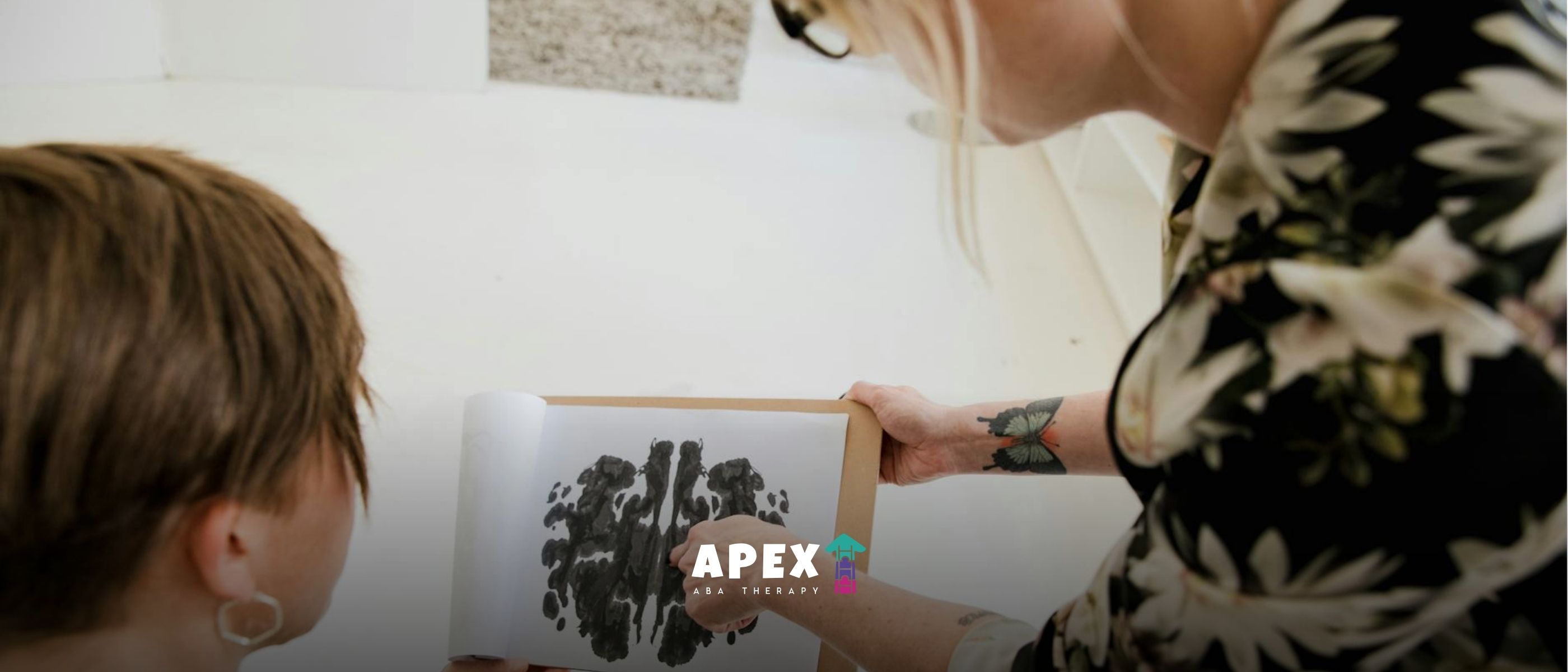Conquering Sensory Aversion in Autism
Break barriers, conquer sensory aversion in autism. Discover effective interventions for sensory challenges and support resources.

Conquering Sensory Aversion in Autism
Understanding Sensory Aversion in Autism
Individuals with autism often experience sensory challenges that can significantly impact their daily lives. Understanding these challenges and the impact of sensory overload is essential in addressing sensory aversion in autism.
Sensory Challenges in Autism
Sensory challenges are common among individuals with autism. These challenges can manifest as over-responsivity or under-responsivity to sensory input. Each individual's sensory profile is unique, and they may have heightened sensitivities or decreased sensitivities to various stimuli such as sights, sounds, smells, and tastes. These sensory challenges can make it difficult for individuals with autism to navigate their environment and engage in everyday activities.
To address sensory challenges, it is important to create a sensory-friendly environment that takes into account the specific sensory needs of the individual. This may involve reducing overwhelming stimuli, providing sensory breaks, and incorporating sensory accommodations [1]. Assistive technology, such as trampolines, swings, noise-canceling headphones, and weighted blankets, can also be used to regulate sensory systems and provide sensory relief.
Impact of Sensory Overload
Sensory overload is a common experience among individuals with autism. It occurs when an individual receives more sensory input than their brain can process, leading to feelings of being overwhelmed and stressed. Sensory overload can be triggered by a single event or build up over time due to daily coping with sensory sensitivities [3].
During sensory overload, individuals may experience intense anxiety, a need to escape the overwhelming environment, or difficulties with communication. Sensory overload can also result in shutting off other brain functions, such as speech and decision-making, as the brain focuses on processing the overwhelming sensory input [4]. It is crucial to recognize and address sensory overload to support individuals with autism in managing their sensory sensitivities.
By understanding the sensory challenges faced by individuals with autism and the impact of sensory overload, we can work towards addressing sensory aversion and creating a supportive environment that accommodates their unique sensory needs.
Addressing Sensory Aversion
When it comes to addressing sensory aversion in individuals with autism, there are various strategies and interventions that can be employed. These approaches aim to provide support and promote sensory regulation, enabling individuals to navigate their environment more comfortably. Two key methods of addressing sensory aversion include the use of assistive technology and sensory-focused interventions.
Assistive Technology for Sensory Regulation
Assistive technology plays a vital role in helping individuals with autism regulate their sensory systems. These tools are designed to provide controlled sensory experiences and aid in managing sensory challenges. Some commonly used assistive technology includes:
- Trampolines and swings: These tools can provide proprioceptive input and promote movement, helping individuals regulate their sensory systems.
- Brushes, balls, and squeeze machines: These tactile tools can offer deep pressure stimulation, aiding in sensory regulation and providing a calming effect.
- Noise-canceling headphones and tinted glasses: These sensory aids can help reduce auditory and visual sensory input, allowing individuals to manage overwhelming stimuli.
- Weighted vests and blankets: The added weight from these sensory tools provides deep pressure input, which can have a calming and organizing effect on the sensory system.
By incorporating assistive technology, individuals with autism can better manage their sensory challenges and create a more comfortable sensory environment. To learn more about creating a sensory-friendly environment, visit our article on creating a sensory-friendly environment.
Sensory-Focused Interventions
Sensory-focused interventions are another important approach to address sensory aversion in individuals with autism. These interventions aim to target aversions and challenges related to sensory processing, while also meeting the individual's needs for sensory input within adaptive frameworks. The goal is to improve the individual's ability to interact with their environment and enhance outcomes such as adaptive behavior and language.
Sensory-focused interventions incorporate various sensory experiences to address specific challenges and promote sensory integration. These interventions may include activities such as:
- Sensory play: Engaging in activities that involve different textures, sounds, and smells can help individuals explore and process sensory information in a controlled and supportive manner.
- Sensory diets: These structured activities and exercises provide a consistent and predictable schedule of sensory input throughout the day, helping individuals regulate their sensory systems and manage sensory aversions.
- Adaptive response training: This intervention involves teaching individuals how to respond effectively to sensory input, enabling them to develop strategies for coping with sensory aversions.
It's important to note that each individual with autism may have unique sensory sensitivities, and it is crucial to tailor interventions to their specific needs. By understanding and addressing these sensitivities, sensory-focused interventions can help individuals with autism navigate their sensory experiences more effectively. For more information on sensory sensitivity in autism, refer to our article on sensory sensitivity in autism.
In summary, addressing sensory aversion in individuals with autism involves utilizing assistive technology to regulate sensory systems and implementing sensory-focused interventions to target sensory challenges and promote adaptive responses. By employing these strategies, individuals with autism can enhance their ability to navigate and interact with their environment in a more comfortable and manageable way.
Read more: Sensory Activities For A Child With Autism
Importance of Sensory Interventions
When it comes to addressing sensory aversion in autism, sensory interventions play a crucial role in promoting adaptive responses to sensory stimuli. These interventions are designed to provide controlled sensory experiences, encouraging the modulation and integration of information from the environment. Their importance is reflected in the diagnostic criteria of the DSM-5, which recognizes the significance of sensory challenges in individuals with autism [6].
DSM-5 and Sensory Challenges
The Diagnostic and Statistical Manual of Mental Disorders (DSM-5) includes sensory challenges associated with autism as an important criterion for diagnosis. Sensory aversions, hyper- or hypo-reactivity to sensory input, are common features observed in individuals with autism. Interventions targeting these challenges are aimed at improving outcomes related to sensory processing issues [6].
Interventions for Sensory Processing
Interventions specifically targeting sensory challenges associated with autism have become increasingly important. These interventions focus on improving outcomes related to sensory processing issues, such as hyper- or hypo-reactivity to sensory input. The goal is to promote adaptive responses to sensory stimuli and help individuals with autism interact more effectively with their environments [6].
To address sensory aversion in autism, various sensory-focused interventions have been developed. These interventions incorporate sensory experiences to target aversions and challenges, meet the needs for sensory input within adaptive frameworks, and address perceived processing deficits. By incorporating these interventions, improvements in adaptive behavior and language can be achieved.
Sensory interventions often involve the use of assistive technology to regulate sensory systems in individuals with autism. Tools such as trampolines, swings, brushes, noise-canceling headphones, weighted vests, tinted glasses, weighted blankets, and squeeze machines are commonly employed to help manage sensory issues [2]. These assistive tools provide controlled sensory input and can help individuals with autism better navigate their sensory experiences.
By addressing sensory challenges through targeted interventions, individuals with autism can develop strategies to cope with sensory aversions and improve their overall functioning. It is important to recognize and provide individualized support for unique sensory sensitivities, as well as implement effective sensory accommodations to create a supportive environment for individuals with autism.
Individualized Sensory Support
When addressing sensory aversion in autism, it is essential to provide individualized sensory support to meet the unique needs of each individual. Understanding the unique sensory sensitivities and implementing effective sensory accommodations can greatly improve the daily lives of individuals with autism.
Unique Sensory Sensitivities
Autistic individuals can have a wide range of sensory sensitivities, which may vary from person to person. Some individuals may experience hypersensitivity, also known as over-responsiveness, where they are more sensitive to certain sensory stimuli like sights, sounds, smells, and tastes. On the other hand, some individuals may experience hyposensitivity, or under-responsiveness, where they have a reduced sensitivity to sensory input. It is important to recognize and respect these unique sensory sensitivities to create a supportive environment for individuals with autism [4].
To better understand an individual's sensory sensitivities, it is crucial to engage in observation and open communication. By carefully observing and listening to the individual, caregivers and professionals can gain insights into their specific sensory triggers and sensitivities. This allows for the development of personalized strategies to address and accommodate their sensory needs.
Read more: Managing Sensory Sensitivities In Autism
Effective Sensory Accommodations
Implementing effective sensory accommodations can significantly enhance the well-being and quality of life for individuals with autism. Sensory accommodations aim to create a sensory-friendly environment that minimizes sensory aversion and supports sensory regulation. These accommodations can be tailored to address the unique sensory sensitivities of each individual.
Assistive technology plays a vital role in providing sensory support for individuals with autism. Tools such as trampolines, swings, noise-canceling headphones, weighted vests, and weighted blankets can help individuals manage sensory issues and regulate their sensory systems [2]. These tools provide sensory input that aids in sensory modulation and helps individuals cope with sensory challenges.
It is important to note that sensory accommodations should be personalized and flexible to meet the changing needs of individuals with autism. Regular communication and feedback from the individual, as well as their caregivers and professionals, can help determine the effectiveness of the accommodations and make any necessary adjustments.
Creating a sensory-friendly environment that considers factors such as lighting, noise levels, and the arrangement of furniture and objects can also contribute to effective sensory accommodations. This environment should be designed to minimize sensory overload and provide a safe and comfortable space for individuals with autism to thrive. For more information on creating a sensory-friendly environment, refer to our article on creating a sensory-friendly environment.
By recognizing and addressing the unique sensory sensitivities of individuals with autism and implementing effective sensory accommodations, we can support their sensory needs and foster a more inclusive and supportive environment. These individualized approaches are crucial in promoting positive sensory experiences and enhancing the overall well-being of individuals with autism.
Practical Strategies for Sensory Needs
When addressing sensory aversion in autism, it is important to implement practical strategies that can help individuals manage their sensory needs effectively. By understanding and accommodating sensory issues, we can create a more supportive environment for autistic individuals. In this section, we will explore two practical strategies: sensory diets and preparing for overload, as well as self-advocacy and support resources.
Sensory Diets and Preparing for Overload
To address sensory aversion in autism, developing a personalized sensory diet can be beneficial. A sensory diet is a planned and structured schedule of activities and strategies that provide the necessary sensory input to regulate and organize the sensory system. This helps individuals cope with sensory challenges and maintain a state of optimal arousal.
A sensory diet may include activities that provide sensory stimulation or help individuals self-regulate. For example, deep pressure activities like weighted blankets or gentle massages can provide a calming effect, while movement activities like swinging or jumping can help release excess energy. It is important to consult with a healthcare professional or occupational therapist to create an appropriate sensory diet tailored to the individual's specific needs.
Preparing for sensory overload is another key strategy. By understanding individual sensory sensitivities and triggers, individuals can better anticipate overwhelming situations and take proactive steps to manage them. This may involve creating a sensory-friendly environment, minimizing sensory triggers, and providing tools or coping strategies that can help individuals self-regulate.
For example, if loud noises are a trigger, individuals can use noise-canceling headphones or earplugs to reduce auditory input. If crowded places cause distress, individuals can plan outings during quieter times or choose less crowded locations. By being prepared and having strategies in place, individuals can better navigate sensory overload and reduce anxiety.
Self-Advocacy and Support Resources
Self-advocacy plays a crucial role in addressing sensory aversion in autism. Autistic individuals should be encouraged to express their sensory needs and advocate for accommodations that support their well-being. This can involve communicating with family members, teachers, employers, or other relevant individuals to ensure their sensory needs are understood and respected.
Additionally, there are numerous support resources available within the autism community that can provide guidance and assistance. Support groups, online forums, and advocacy organizations offer a platform for individuals with autism and their families to connect, share experiences, and learn from one another. These resources can provide valuable information, tips, and emotional support for individuals navigating sensory aversion.
By implementing practical strategies such as sensory diets, preparing for overload, practicing self-advocacy, and utilizing support resources, individuals with autism can better manage sensory aversion and improve their overall well-being. It is essential to recognize that each individual's sensory needs are unique, and a personalized approach is crucial. By fostering understanding, empathy, and support, we can help individuals with autism thrive in a world that may be overwhelming at times.
Sensory Sensitivities and Autism
Understanding sensory sensitivities is crucial when addressing sensory aversion in individuals with autism. Sensory issues are common in people with autism, and each individual may experience their own unique set of sensitivities. These sensitivities can manifest as hyper- or hypo-sensitivity to various stimuli, impacting their daily functioning.
Hyper- and Hypo-Sensitivity
Autistic individuals can experience both hyper-sensitivity (over-responsiveness) and hypo-sensitivity (under-responsiveness) to various sensory inputs. Hyper-sensitivity refers to an intensified response to sensory stimuli, where ordinary sounds, sights, smells, tastes, or touches may feel overwhelming or painful. For example, a loud noise that may be tolerable to others could be distressing for someone with hyper-sensitivity to sound.
On the other hand, hypo-sensitivity refers to a reduced response to sensory input. Individuals with hypo-sensitivity may seek out intense sensory experiences or may not register certain stimuli. For instance, they may have a high pain tolerance or not notice extreme temperatures.
It's important to note that sensory sensitivities can vary widely among individuals with autism. One person may be hyper-sensitive to certain sounds but hypo-sensitive to touch, while another may have different sensitivities altogether. Understanding these sensitivities on an individual level is crucial for effective support and intervention.
Impact on Daily Functioning
Sensory sensitivities can significantly impact the daily functioning of individuals with autism. Sensory overload, which occurs when an individual receives more sensory input than their brain can process, can lead to overwhelming feelings of stress and unease. It can affect various aspects of life, including communication, social interactions, and overall well-being.
Sensory overload can result in difficulties with self-regulation, leading to behaviors such as meltdowns or withdrawal. It can also contribute to challenges in focusing, attention, and learning. For example, a child with hyper-sensitivity to visual stimuli may struggle to concentrate in a visually stimulating classroom environment.
To address the impact of sensory sensitivities on daily functioning, it is important to create a sensory-friendly environment that takes into account the specific needs and sensitivities of individuals with autism. This may involve adapting lighting, reducing noise levels, providing sensory breaks, or offering alternative sensory experiences.
By recognizing and accommodating sensory sensitivities, individuals with autism can better navigate their environment and engage in activities that promote their well-being and overall quality of life. Understanding the unique sensory needs of each individual is key to providing effective support and interventions for addressing sensory aversion in autism.
References
Frequently Asked Questions

What’s the Difference Between High-Functioning Autism and Asperger’s?
Difference Between High-Functioning Autism and Asperger’s

What Does It Mean to Be “On the Spectrum”?
What Does It Mean to Be on the Autism Spectrum? | Apex ABA

Is Autism a Mental Illness or a Developmental Disorder?
Mental Illness or Developmental Disorder Explained

Can Children “Outgrow” Autism?
Can Children Outgrow Autism? Understanding the Facts

Is Autism More Common in Boys Than Girls?
Autism in Boys vs Girls: What the Research Reveals

Understanding the Power of Functional Behavior Assessment ABA
Effective ABA Techniques for Behavioral Intervention

Life-Changing ABA Therapy Case Studies You Need to Know
Real Success Stories from ABA Therapy Journeys | Apex ABA

Discover How ABA Helps ADHD in Your Child’s Life
How ABA Therapy Helps Children with ADHD | Apex ABA

ABA Therapy vs Preschool: Making the Right Choice Explained
Learn the key differences between ABA therapy and preschool to help you choose the best option for supporting your child’s early learning and development.

Which Personality Type Is Most Likely to Be Autistic?
Which Personality Type Is Most Likely to Be Autistic? | Apex ABA

Why Consistency Matters: What Happens If ABA Therapy Ends Prematurely
What Happens If ABA Therapy Is Stopped Too Early? | Apex ABA

How Can You Gain an Autistic Person’s Attention? Tips for Meaningful Connection
How Can You Gain an Autistic Person’s Attention?

Sensory Sensitivity and Sixth Sense: What Autism Research Shows
Do Autistic People Have Sixth Sense? | Apex ABA

What Happens If Autism Is Left Untreated?
Can Autism Get Worse If Untreated? | Apex ABA

What Not To Do With An Autistic Child: Avoid These 10 Mistakes
What Not To Do With An Autistic Child? | Apex ABA

Coping with Regressive Autism: Tips for Parents
What is Regressive Autism? | Apex ABA

Do Autistic Kids Live with Parents Forever? Here’s the Reality
Do autistic kids live with parents forever? Discover the facts about independence and living arrangements in autism with expert-backed insights.

Red Flags in ABA Therapy: What Parents Must Watch For
What are the red flags in ABA therapy? Learn to identify warning signs for safe, effective autism treatment in this blog.

Can You Go from Level 3 Autism to Level 1? Is It Possible?
Can you go from level 3 autism to level 1? Learn about progress, therapy, and support options with expert help from Apex ABA.

Autism vs Introversion: How to Tell the Difference
Is it autism or just introversion? Learn the key differences and signs with expert insights from Apex ABA.

ABA for Managing Transitions: Tips to Ease Change for Kids
Learn how ABA for managing transitions helps children with autism handle change smoothly.

Understanding the 7 Dimensions of ABA for Better Outcomes
Discover the 7 Dimensions of ABA and how they can lead to better outcomes.

5 Unique Autistic Love Languages You Should Know About
Discover the 5 unique autistic love languages that can enhance your relationships.

Transforming Futures: Improving Lives of Kids with Autism
Discover how innovative strategies are focused on improving lives of kids with autism.

ABA Therapy Techniques for Addressing Repetitive Behaviors in Autism
Harnessing ABA Strategies to Tackle Repetitive Behaviors in Autism

The Role of ABA Therapy in Enhancing Communication Skills
Transforming Communication for Children with Autism Through ABA Therapy

How ABA Therapy Supports Effective Communication in Nonverbal Children
Unlocking Speech Through ABA: Transformative Paths for Nonverbal Children

How to Help Your Child Transfer Skills Learned in ABA Therapy to Real Life
Unlocking Real-World Success for Children in ABA Therapy

How ABA Therapy Helps Children Develop Better Organizational Skills
Empowering Children with ABA Therapy for Enhanced Organizational Skills

The Importance of Creating a Structured Routine in ABA Therapy
How Structured Routines Transform ABA Therapy for Autism

The Role of ABA Therapy in Developing Conflict Resolution Skills
How ABA Therapy Transforms Conflict Resolution Competence

The Importance of Generalization in ABA Therapy for Autism
Unraveling the Role of Generalization in Enhancing ABA Therapy Outcomes

Why ABA Therapy is Crucial for Parents of Children with Autism
The Transformative Impact of ABA Therapy on Families with Autistic Children

How to Involve Parents in the ABA Therapy Process
Maximize Parent Engagement in ABA Therapy for Better Outcomes

What are the Core Principles of ABA Therapy?
Exploring the Cornerstones of Applied Behavior Analysis

Why Communication is Key in ABA Therapy for Autism
The Crucial Role of Communication in ABA Therapy for Autism

Why ABA Therapy Works for Children with Autism Regardless of Severity
Effective ABA Interventions for All Levels of Autism

Why It’s Important to Maintain a Balanced Approach to ABA Therapy
Balancing Effectiveness and Ethics in ABA Therapy

The Role of ABA Therapy in Developing Adaptive Behavior Skills
Exploring How ABA Therapy Transforms Lives

The Benefits of Combining ABA Therapy with Speech Therapy
Maximizing Development with Integrated Therapy Approaches

What to Expect During an ABA Therapy Session
Demystifying ABA Therapy Sessions: A Comprehensive Overview

How ABA Therapy Enhances Cognitive Functioning in Children with Autism
Exploring the Influence of Applied Behavior Analysis on Autism Cognition

How ABA Therapy Helps Children with Autism with Transitions Between Activities
Easing Transitions for Children with Autism: The Role of ABA Therapy

How to Foster Cooperation Between Parents and Therapists in ABA Therapy
Building Effective Partnerships in ABA Therapy

The Role of Positive Reinforcement in ABA Therapy
Exploring the Impact of Positive Reinforcement in Modern ABA Therapy

Why ABA Therapy is Effective for Children of All Ages
Understanding the Reach and Impact of ABA Therapy Across Age Groups

How to Support Your Child’s Emotional Growth with ABA Therapy
Harnessing ABA Therapy for Enhancing Emotional Development in Children with Autism

The Role of ABA Therapy in Enhancing Peer Relationships for Children with Autism
Harnessing ABA Therapy to Boost Social Connections Among Autistic Children

How to Overcome Common Challenges in ABA Therapy
Navigating Hurdles in ABA Therapy: Strategies and Solutions

How to Manage Behavioral Expectations with ABA Therapy
Understanding Applied Behavior Analysis in Behavioral Management

How ABA Therapy Promotes Emotional Regulation in Children with Autism
Unlocking Emotional Balance: ABA Therapy's Role in Autism

How ABA Therapy Improves Social Skills in Children with Autism
Harnessing ABA Therapy to Enhance Social Competency in Autistic Children

The Role of ABA Therapy in Classroom Success for Children with Autism
Harnessing ABA for Academic and Social Growth in Autism

The Importance of Evaluating and Revising ABA Therapy Goals Regularly
Regular Evaluations: The Cornerstone of ABA Therapy Success

How to Choose the Right ABA Therapy Program for Your Child
Finding the Perfect ABA Therapy Fit for Your Child

The Role of Behavior Analysts in Implementing ABA Therapy
Understanding the Vital Contributions of Behavior Analysts in ABA Therapy

The Role of RBTs (Registered Behavior Technicians) in ABA Therapy
A Closer Look at the Essential Work of RBTs in ABA Therapy

What Makes ABA Therapy Effective for Different Learning Styles?
Unraveling the Flexibility and Effectiveness of ABA Therapy

Understanding the Importance of Data Collection in ABA Therapy
The Role of Data in Shaping Effective ABA Therapy

How ABA Therapy Helps with Toilet Training in Children with Autism
Unlocking Independence: ABA's Role in Autism Toilet Training

The Importance of Encouraging Natural Play in ABA Therapy
Revolutionizing ABA Therapy with Natural Play

How to Make the Most of ABA Therapy at Home
Enhancing ABA Therapy Practices Within Your Home

How to Make ABA Therapy Fun and Engaging for Children with Autism
Transforming ABA Therapy into a Fun Learning Journey

The Role of ABA Therapy in Addressing Verbal and Nonverbal Communication in Autism
Enhancing Communication Skills in Autism Through ABA Therapy

Understanding the Role of Family in ABA Therapy for Autism
The Crucial Impact of Family Engagement in Autism Therapy

How to Handle Setbacks and Challenges in ABA Therapy
Navigating Difficulties and Setbacks in ABA Therapy for Children

How ABA Therapy Can Help Children Build Stronger Relationships with Peers
Unpacking the Influence of ABA Therapy on Peer Relationships in Children

Understanding the Concept of Shaping in ABA Therapy
Demystifying Shaping Techniques in Applied Behavior Analysis

How ABA Therapy Enhances Independent Living Skills in Autism
Unlocking Independence: The Role of ABA Therapy in Autism
.jpg)
90+ Reading Statistics, Facts and Demographics
In this article, we will dive into 60 reading statistics that shed light on the importance of reading and its impact on different aspects of life.

How ABA Therapy Can Help Children with Autism Make Better Choices
Unlocking Autistic Children's Potential with ABA Therapy

How ABA Therapy Helps Children with Autism Adapt to New Environments
The Adaptive Benefits of ABA Therapy for Autism

What Does the Research Say About the Effectiveness of ABA Therapy?
Exploring the Role and Research Behind ABA Therapy

How to Create an Effective ABA Therapy Plan for Your Child
Guiding Parents Through Effective ABA Therapy Planning

The Long-Term Benefits of Consistent ABA Therapy for Children with Autism
Unlocking Potential: Consistent ABA Therapy for Autism

Why ABA Therapy Should Be Tailored to Each Child’s Unique Needs
The Necessity of Customizing ABA Therapy for Unique Child Development

What are the Different Types of ABA Therapy?
Exploring the Varieties of ABA Therapy for Autism and Beyond

How ABA Therapy Can Improve Functional Skills in Children with Autism
Unlocking the Potential: ABA Therapy for Autistic Children

How ABA Therapy Facilitates Peer Interaction for Children with Autism
Understanding the Impact of ABA Therapy on Autism and Peer Relationships

The Importance of Early Intervention in Autism Therapy
Unlocking Potential: The Crucial Role of Early Intervention in Autism

The Role of ABA Therapy in Creating Healthy Habits for Children with Autism
Understanding How ABA Therapy Shapes Daily Life for Autistic Children

How to Create a Supportive Environment for Children Undergoing ABA Therapy
Crafting a Nurturing Space for Effective ABA Therapy

The Benefits of Incorporating Technology into ABA Therapy
Harnessing Technology for Enhanced ABA Therapy Outcomes

How ABA Therapy Helps with Stereotypic Behavior in Autism
ABA Therapy: Transforming Stereotypic Behaviors into Meaningful Interactions in Autism

What to Expect in an ABA Therapy Program for Children with Autism
Understanding ABA Therapy for Kids with Autism

How to Create a Positive Home Environment for Children Under ABA Therapy
Cultivating a Therapeutic Space for ABA Success

How ABA Therapy Can Improve Safety Awareness in Children with Autism
Empowering Safety through ABA Therapy for Kids with Autism

The Link Between ABA Therapy and Improved Academic Performance in Children with Autism
Exploring the Profound Impact of ABA on Autism-Related Educational Success

The Benefits of Early ABA Intervention for Toddlers with Autism
Unveiling the Power of ABA for Toddlers with Autism

How ABA Therapy Promotes Independence and Life Skills Development
Unlocking Independence: The Role of ABA Therapy in Life Skills Development

How to Deal with the Emotional Impact of ABA Therapy on Parents
Navigating Emotions: Support Tips for Parents in ABA Therapy

The Role of ABA Therapy in Reducing Meltdowns in Children with Autism
Exploring the Power of ABA in Emotional Management for Kids with Autism

How ABA Therapy Addresses Noncompliance and Defiance
Unlocking Compliance and Resolving Defiance with ABA Techniques

How to Address Communication Barriers in ABA Therapy for Nonverbal Children
Strategies to Enhance Communication in Nonverbal Children with Autism

How to Implement ABA Strategies at Home for Continued Success
Creating a Successful ABA Environment at Home

How ABA Therapy Helps Children with Autism Build Self-Esteem
Building Confidence in Children with Autism Through ABA Therapy

The Benefits of ABA Therapy for Children with Autism
Understanding the Positive Impact of ABA Therapy for Autism

Why ABA Therapy Works for a Variety of Behavioral Issues in Children
Exploring the Versatile Impact of ABA Therapy on Children's Behavior

How ABA Therapy Helps with Self-Care Skills in Autism
Unlocking Independence Through ABA: Fostering Self-Care Skills in Autism

The Impact of ABA Therapy on Siblings of Children with Autism
Understanding the Role of ABA Therapy in Family Dynamics



